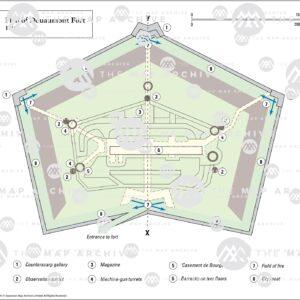World War I, often referred to as the Great War, was a global conflict that fundamentally changed the course of history. From 1914 to 1918, nations across the world were embroiled in a struggle that spanned continents, resulted in massive casualties, and led to significant geopolitical shifts. One of the most fascinating ways to understand this complex and multifaceted war is through the maps that detail the various battles, troop movements, and territorial changes. The Map Archive offers a comprehensive collection of World War I maps that provide invaluable insights into the war’s strategic and tactical aspects.
The Importance of Maps in World War I
Maps played a crucial role in World War I, serving both strategic and educational purposes. For military leaders, maps were indispensable tools for planning offensives, coordinating movements, and understanding enemy positions. For historians and enthusiasts, these maps are vital for studying the war’s progression and understanding the broader context of each battle.
Types of World War I Maps
Strategic Maps: These maps depict large-scale strategies and troop movements across entire fronts. They are essential for understanding the broader context of the war and the overall plans of the belligerent nations.
Battle Maps: These maps focus on specific battles, detailing troop positions, movements, and key events. They provide a close-up view of the action, illustrating the tactics employed by both sides.
Trench Maps: World War I is famously associated with trench warfare. Trench maps show the intricate networks of trenches that defined much of the conflict on the Western Front.
Territorial Maps: These maps illustrate the changes in territorial control over the course of the war. They highlight the shifting front lines and the territorial gains and losses of the warring nations.
Key World War I Battle Maps
The Battle of the Marne (1914)
The Battle of the Marne, fought in September 1914, was a crucial early battle that halted the German advance into France. Maps of this battle show the positions of the German and Allied forces and the pivotal movements that led to the Allies’ success. The detailed depiction of troop movements highlights the strategic decisions that shaped the battle’s outcome.
The Battle of Verdun (1916)
One of the longest and most grueling battles of the war, the Battle of Verdun, saw French and German forces locked in a deadly struggle for control. Maps of Verdun illustrate the fortress city’s defensive positions and the extensive trench networks. They also show the ebb and flow of the battle, with lines indicating the front’s shifting positions over ten months of brutal fighting.
The Battle of the Somme (1916)
The Battle of the Somme, which began in July 1916, is infamous for its staggering casualties and the limited territorial gains. Maps of the Somme detail the British and French offensive against German positions, showing the initial plans and the eventual stalemate. These maps are crucial for understanding the high human cost of the war and the challenges of trench warfare.
The Gallipoli Campaign (1915-1916)
The Gallipoli Campaign was an Allied operation aimed at securing a sea route to Russia. The maps of Gallipoli show the landings, the rugged terrain, and the positions of the Turkish defenses. They provide a clear picture of the operational difficulties faced by the Allied forces and the strategic importance of the Dardanelles strait.
Maps and the War’s Progression
Maps are not only valuable for studying individual battles but also for understanding the overall progression of the war. By examining a series of maps from 1914 to 1918, one can trace the shifting front lines, the changing strategies, and the impact of major events like the Russian Revolution and the entry of the United States into the war.
The Map Archive: A Treasure Trove of World War I Maps
The Map Archive offers an extensive collection of World War I maps, meticulously curated to provide a comprehensive view of the conflict. This digital repository includes:
High-Resolution Scans: Detailed, high-resolution scans of historical maps allow for close examination of key features and annotations.
Interactive Maps: Interactive maps offer a dynamic way to explore the battlefields, with clickable elements that provide additional information and context.
Thematic Collections: Thematic collections group maps by specific battles, fronts, or themes, making it easy to study particular aspects of the war.
Educational Resources: Accompanying the maps are educational resources, including articles, timelines, and biographies, that provide additional context and enhance understanding.
Utilizing World War I Maps for Education and Research
For educators, students, and researchers, the maps available at the Map Archive are invaluable tools. They can be used to:
Teach History: Maps bring history to life, helping students visualize the war’s events and understand the geographical context.
Conduct Research: Researchers can use the maps to study specific battles, analyze military strategies, and explore the war’s impact on different regions.
Create Exhibits: Museums and historical societies can use the maps to create engaging exhibits that illustrate key aspects of World War I.
Conclusion
Maps are more than just representations of geography; they are windows into the past that reveal the strategies, movements, and events that shaped history. The World War I maps available at the Map Archive offer a detailed and comprehensive view of the Great War, from the strategic plans of generals to the harrowing realities of trench warfare. Whether you are a history enthusiast, an educator, or a researcher, these maps provide a valuable resource for exploring one of the most significant conflicts in human history. Through these maps, we can gain a deeper understanding of World War I and the profound impact it had on the world.





Comments